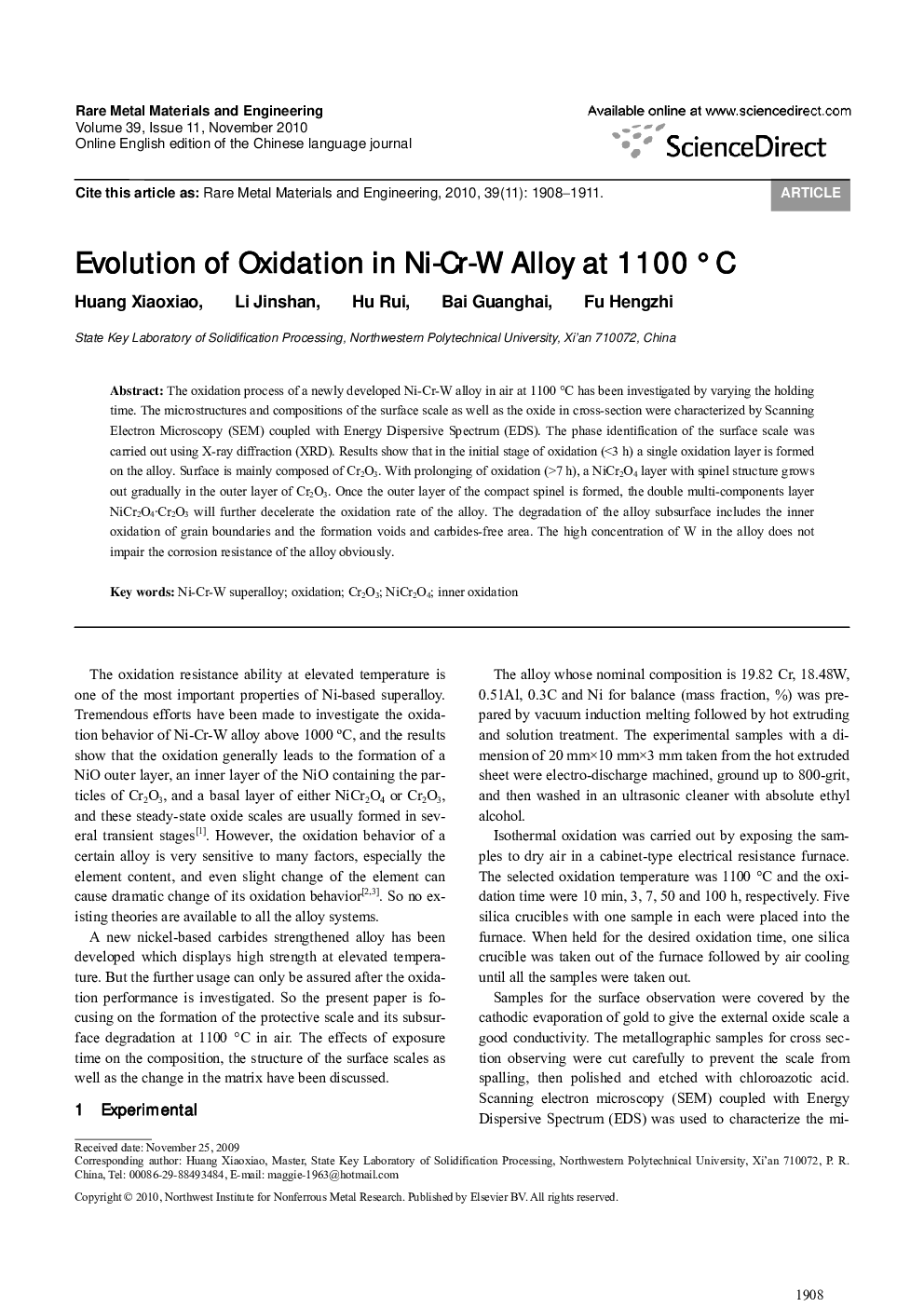| Article ID | Journal | Published Year | Pages | File Type |
|---|---|---|---|---|
| 815306 | Rare Metal Materials and Engineering | 2010 | 4 Pages |
The oxidation process of a newly developed Ni-Cr-W alloy in air at 1100 °C has been investigated by varying the holding time. The microstructures and compositions of the surface scale as well as the oxide in cross-section were characterized by Scanning Electron Microscopy (SEM) coupled with Energy Dispersive Spectrum (EDS). The phase identification of the surface scale was carried out using X-ray diffraction (XRD). Results show that in the initial stage of oxidation (<3 h) a single oxidation layer is formed on the alloy. Surface is mainly composed of Cr2O3. With prolonging of oxidation (>7 h), a NiCr2O4 layer with spinel structure grows out gradually in the outer layer of Cr2O3. Once the outer layer of the compact spinel is formed, the double multi-components layer NiCr2O4·Cr2O3 will further decelerate the oxidation rate of the alloy. The degradation of the alloy subsurface includes the inner oxidation of grain boundaries and the formation voids and carbides-free area. The high concentration of W in the alloy does not impair the corrosion resistance of the alloy obviously.
